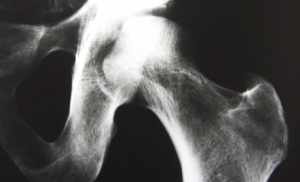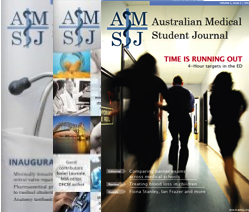Fifth Year Medicine (Undergraduate)
University of New South Wales
The issue of falls is a significant health concern in geriatric medicine and a major contributor to morbidity and mortality in those over 65 years of age. Gait and balance problems are responsible for up to a quarter of falls in the elderly. It is unclear whether dual- task assessments, which have become increasingly popular in recent years, have any added benefit over single-task assessments in predicting falls. A previous systematic review that included manuscripts published prior to 2006 could not reach a conclusion due to a lack of available data. Therefore, a systematic review was performed on all dual-task material published from 2006 to 2011 with a focus on fall prediction. The review included all studies published between 2006-2011 and available through PubMed, EMBASE, PsycINFO, CINAHL and the Cochrane Central Register of Controlled Trials databases that satisfied inclusion and exclusion criteria utilised by the previous systematic review. A total of sixteen articles met the inclusion criteria and were analysed for qualitative and quantitative results. A majority of the studies demonstrated that poor performance during dual-task assessments was associated with a higher risk of falls in the elderly. Only three of the 16 articles provided statistical data for comparison of single- and dual-task assessments. These studies provided insufficient data to demonstrate whether dual-task tests were superior to single- task tests in predicting falls in the elderly. Further head-to-head studies are required to determine whether dual-task assessments are superior to single-task assessments in their ability to predict future falls in the elderly.
Introduction

Many simple tasks of daily living such as standing, walking or rising from a chair can potentially lead to a fall. Each year one in three people over the age of 65 living at home will experience a fall, with five percent requiring hospitalisation. [1, 2] Gait and balance problems are responsible for 10-25% of falls in the elderly, only surpassed by ‘slips and trips,’ which account for 30-50%. [2] Appropriate clinical evaluation of identifiable gait and balance disturbances, such as lower limb weakness or gait disorders, has been proposed as an efficient and cost-effective practice which can prevent many of these falls. As such, fall prevention programs have placed a strong emphasis on determining a patient’s fall risk by assessing a variety of physiological characteristics. [2, 3]
Dual-task assessments have become increasingly popular in recent years, because they examine the relationship between cognitive function and attentional limitations, that is, a subject’s ability to divide their attention. [4] The accepted model for conducting such tests involves a primary gait or balance task (such as walking at normal pace) performed concurrently with a secondary cognitive or manual task (such as counting backwards). [4, 5] Divided attention whilst walking may manifest as subtle changes in posture, balance or gait. [5, 6] It is these changes that provide potentially clinically significant correlations, for example, detecting changes in balance and gait after an exercise intervention. [5, 6] However, it is unclear whether a patient’s performance during a dual-task assessment has any added benefit over a single-task assessment in predicting falls.
In 2008, Zijlstra et al. [7] produced a systematic review of the literature which attempted to evaluate whether dual-task balance assessments are more sensitive than single balance tasks in predicting falls. It included all published studies prior to 2006 (inclusive), yet there was a lack of available data for a conclusion to be made. This was followed by a review article by Beauchet et al. [8] in 2009 that included additional studies published up to 2008. These authors concluded that changes in performance while dual-tasking were significantly associated with an increased risk of falling in older adults. The purpose of this present study was to determine, using recently published data, whether dual-task tests of balance and/or gait have any added benefit over single-task tests in predicting falls. A related outcome of the study was to gather data to either support or challenge the use of dual-task assessments in fall prevention programs.
A systematic review of all published material from 2006 to 2011 was performed, focusing on dual-task assessments in the elderly. Inclusion criteria were used to ensure only relevant articles reporting on fall predictions were selected. The method and results of included manuscripts were qualitatively and quantitatively analysed and compared.
Methods
Literature Search
A systematic literature search was performed to identify articles which investigated the relationship between falls in older people and balance/gait under single-task and dual-task conditions. The electronic databases searched were PubMed, EMBASE, PsycINFO, CINAHL and Cochrane Central Register of Controlled Trials. The search strategy utilised by Ziljstra et al. [7] was carried out. Individual search strategies were tailored to each database, being adapted from the following which was used in PubMed:
1. (gait OR walking OR locomotion OR musculoskeletal equilibrium OR posture)
2. (aged OR aged, 80 and over OR aging)
3. #1 AND #2
4. (cognition OR attention OR cognitive task(s) OR attention tasks(s) OR dual task(s) OR double task paradigm OR second task(s) OR secondary task(s))
5. #3 AND #4
6. #5 AND (humans)
Bold terms are MeSH (Medical Subjects Headings) key terms. The search was performed without language restrictions and results were filtered to produce all publications from 2006 to March 2011 (inclusive). To identify further studies, the author hand-searched reference lists of relevant articles, and searched the Scopus database to identify any newer articles which cited primary articles.
Selection of papers
The process of selecting manuscripts is illustrated in Figure 1. Only articles with publication dates from 2006 onwards were included, as all relevant articles prior to this were already contained in the mini-review by Ziljstra et al. [7] Two independent reviewers then screened article titles for studies that employed a dual-task paradigm – specifically, a gait or balance task coupled with a cognitive or manual task – and included falls data as an outcome measure.
Article abstracts were then appraised to determine whether the dual- task assessment was used appropriately and within the scope of the present study; that is to: (1) predict future falls, or (2) differentiate between fallers and non-fallers based on retrospective data collection of falls. Studies were only considered if subjects’ fall status was determined by actual fall events – the fall definitions stated in individual articles were accepted. Studies were included if participants were aged 65 years and older. Articles which focused on adult participants with a specific medical condition were also included. Studies that reported no results for dual-task assessments were included for descriptive purposes only. Interventional studies which used the dual- task paradigm to detect changes after an intervention were excluded, as were case studies, review articles or studies that used subjective scoring systems to assess dual-task performance.
Analysis of relevant papers
Information on the following aspects was extracted from each article: study design (retrospective or prospective collection of falls), number of subjects (including gender proportion), number of falls required to be classified a ‘faller’, tasks performed and the corresponding measurements used to report outcome, task order and follow up period if appropriate.
Where applicable, each article was also assessed for values and results which allowed comparison between the single and dual-task assessments and their respective falls prediction. The appropriate statistical measures required for such a comparison include sensitivity, specificity, positive and negative predictive values, odds ratios or likelihood ratios. [9] The dual-task cost, or difference in performance between the single and dual-task, was also considered.
Results
The database search of PubMed, EMBASE, PsycINFO, CINAHL and Cochrane produced 1154, 101, 468, 502 and 84 references respectively. As alluded to by Figure 1, filtering results for publications between 2006-2011 almost halved results to a total of 1215 references. A further 1082 studies were omitted as they fell under the category of duplicates, non-dual task studies, or did not report falls as the outcome.
The 133 articles which remained reported on falls using a dual- task approach, that is, a primary gait or balance task paired with a secondary cognitive task. Final screening was performed to ensure that the mean age of subjects was at least 65, as well as to remove case studies, interventional studies and review articles. Sixteen studies met the inclusion criteria, nine retrospective and seven prospective fall studies, summarised by study design in Tables 1A and 1B respectively.
The number of subjects ranged from 24 to 1038, [10, 11] with half the studies having a sample size of 100 subjects or more. [11-18] Females were typically the dominant participants, comprising over 70% of the subject cohort on nine occasions. [10, 13, 14, 16-21] Eight studies investigated community-dwelling older adults, [10-12, 14, 15, 19, 20, 22] four examined older adults living in senior housing/residential facilities [13, 16-18] and one focused on elderly hospital inpatients. [21] A further three studies exclusively investigated subjects with defined pathologies, specifically progressive supranuclear palsy, [23] stroke [24] and acute brain injury. [25]
Among the nine retrospective studies, the fall rate ranged from 10.0% to 54.2%. [12, 25] Fall rates were determined by actual fall events; five studies required subjects to self-report the number of falls experienced over the preceding twelve months, [10, 12, 20, 23, 24] three studies asked subjects to self-report over the previous six months [13, 22, 25] and one study utilised a history-taking approach, with subjects interviewed independently by two separate clinicians. [19] Classification of subjects as a ‘faller’ varied slightly, with five studies reporting on all fallers (i.e. ≥ 1 fall), [10, 19, 20, 22, 25] three reporting only on recurrent fallers (i.e. ≥ 2 falls), [12, 13, 23] and one which did not specify. [24]
The fall rate for the seven prospective studies ranged from 21.3% to 50.0%. [15, 21] The number of falls per subject were collected during the follow-up period, which was quite uniform at twelve months, [11, 14, 16-18, 21] except for one study which continued data collection for 24 months. [15] The primary outcome measure during the follow- up period was fall rate, based on either the first fall [16-18, 21] or incidence of falls. [11, 14, 15]
The nature of the primary balance/gait task varied between studies. Five studies investigated more than one type of balance/gait task. [10, 12, 19, 20, 24] Of the sixteen studies, ten required subjects to walk along a straight walkway, nine at normal pace [10, 11, 14, 16-19, 21, 24] and one at fast pace. [23] Three studies incorporated a turn along the walkway [15, 22, 25] and a further study comprised of both a straight walk and a separate walk-and-turn. [12] The remaining two studies did not employ a walking task of any kind, but rather utilised a voluntary step execution test [13], a Timed Up & Go test and a one-leg balance test. [20]
The type of cognitive/secondary task also varied between studies. All but three studies employed a cognitive task; one used a manual task [19] and two used both a cognitive and a manual task. [11, 14] Cognitive tasks differed greatly to include serial subtractions, [14, 15, 20, 22, 23] backward counting aloud, [11, 16-18, 21] memory tasks, [24, 25] stroop tasks [10, 13] and visuo-spatial tasks. [12] The single and dual-tasks were performed in a random order in six of the sixteen studies. [10, 12, 16-18, 20]
Thirteen studies recorded walking time or gait parameters as a major outcome. [10-12, 14-17, 19, 21-25] Of all studies, eleven reported that dual-task performance was associated with the occurrence of falls. A further two studies came to the same conclusion, but only in the elderly with high functional capacity [11] or during specific secondary tasks. [14] One prospective [17] and two retrospective studies [20, 25] found no significant association between dual-task performance and falls.
As described in Table 2, ten studies reported figures on the predictive ability of the single and/or dual-tasks; [11-18, 21, 23] some data was obtained from the systematic review by Beauchet et al. [8] The remaining six studies provided no fall prediction data. In predicting falls, dual-task tests had a sensitivity of 70% or greater, except in two studies which reported values of 64.8% [17] and 16.7%. [16] Specificity ranged from 57.1% to 94.3%. [16, 17] Positive predictive values ranged from to 38.0% to 86.7%, [17, 23] and negative predictive values from 54.5% to 93.2%. [21, 23] Two studies derived predictive ability from the dual-task ‘cost’, [11, 14] which was defined as the difference in performance between the single and dual-task test.
Only three studies provided statistical measures for the fall prediction of the single task and the dual-task individually. [16, 17, 21] Increased walking time during single and dual-task conditions were similarly associated with risk of falling, OR= 1.1 (95% CI, 1.0-1.2) and OR= 1.1 (95% CI, 0.9-1.1), respectively. [17] Variation in stride time also predicted falls, OR= 13.3 (95% CI, 1.6-113.6) and OR= 8.6 (95% CI, 1.9- 39.6) in the single and dual-task conditions respectively. [21] Walking speed predicted recurrent falls during single and dual-tasks, OR = 0.96 (95% CI, 0.94-0.99) and OR= 0.60 (95% CI, 0.41-0.85), respectively. [16] The later study reported that a decrease in walking speed increased risk of recurrent falls by 1.67 in the dual-task test compared to 1.04 during single-task. All values given in these three studies, for both single and dual-task tests, were interpreted as significant in predicting falls by their respective authors.
Discussion
Only three prospective studies directly compared the individual predictive values of the single and dual-task tests. The first such study concluded that the dual-task test was in fact equivalent to the single- task test in predicting falls. [17] This particular study also reported the lowest positive predictive value of all dual-task tests at 38%. The second study [21] also reported similar predictive values for the single and dual-task assessments, as well as a relatively low positive predictive value of 53.9%. Given that all other studies reported higher predictive values, it may be postulated that at the very least, dual-task tests are comparable to single-task tests in predicting falls. Furthermore, the two studies focused on subjects from senior housing facilities and hospital inpatients (187 and 57 participants respectively), and therefore results may not represent all elderly community-dwelling individuals. The third study [16] concluded that subjects who walked slower during the single-task assessment would be 1.04 times more likely to experience recurrent falls than subjects who walked faster. However, after a poor performance in the dual-task assessment, their risk may be increased to 1.67. This suggests that the dual-task assessment can offer a more accurate figure on risk of falling. Again, participants tested in this study were recruited from senior housing facilities, and thus results may not be directly applicable to the community-dwelling older adult.
Eight studies focused on community-dwelling participants, and all but one [20] suggested that dual-task performance was associated with falls. Evidence that dual-task assessments may be more suitable for fall prediction in the elderly who are healthier and/or living in the community as opposed to those with poorer health is provided by Yamada et al. [11] Participants were subdivided into groups by results of a Timed Up & Go test, separating the ‘frail’ from the ‘robust’. It was found that the dual-task assessments were associated with falls only in groups with a higher functional capacity. This intra-cohort variability may account for, at least in part, why three studies included in this review concluded that there was no benefit in performing dual-task assessments. [17, 20, 25] These findings conflicted with the remaining thirteen studies and may be justified by one or all of several possible reasons: (1) the heterogeneity of the studies, (2) the non-standardised application of the dual-task paradigm, or (3) the hypothesis that dual- task assessments are more applicable to specific subpopulations within the generalised group of ‘older adults’, or further, that certain primary and secondary task combinations must be used to produce favourable results.
The heterogeneity among the identified studies played a major role in limiting the scope of analysis and potential conclusions derived from this review. For example, the dichotomisation of the community- dwelling participants in to frail versus robust [11] illustrates the variability within a supposedly homogenous patient population. Another contributor to the heterogeneity of the studies is the broad range of cognitive or secondary tasks used, which varied between manual tasks [19] and simple or complex cognitive tasks. [10-21, 23-25] The purpose of the secondary task is to reduce attention allocated to the primary task. [5] Since the studies varied in secondary task(s) used, each with a slightly different level of complexity, attentional resources redirected away from the primary balance or gait task would also be varied. Hence, the ability of each study to predict falls is expected to be unique, or poorer, in studies employing a secondary task which is not sufficiently challenging. [26] One important outcome from this review has been to highlight the lack of a standardised protocol for performing dual-task assessments. There is currently no identified combination of a primary and secondary task which has proven superiority in predicting falls. Variation in the task combinations, as well as varied participant instructions given prior to the completion of tasks, is a possible explanation for the disparity between results. To improve result consistency and comparability in this emerging area of research, [6] dual-task assessments should be comprised of a standardised primary and secondary task.
Sixteen studies were deemed appropriate for inclusion in this systematic review. Despite a thorough search strategy, it is possible that some relevant studies may have been overlooked. Based on limited data from 2006 to 2011, the exact benefit of dual-task assessments in predicting falls compared to single-task assessments remains uncertain. For a more comprehensive verdict, further analysis is required to combine previous systematic reviews, [7, 8] which incorporates data prior to 2006. Future dual-task studies should focus on fall prediction and report predictive values for both the single-task and the dual-task individually in order to allow for comparisons to be made. Such studies should also incorporate large sample sizes, and assess living conditions and health status of participants. Emphasis on the predictive value of dual-task assessments requires these studies to be prospective in design, as prospective collection of fall data is considered the gold standard. [27]
Conclusion
Due to the heterogeneous nature of the study population, the limited statistical analysis and a lack of direct comparison between single- task and dual-task assessments, the question of whether dual-task assessments are superior to single-task assessments for fall prediction remains unanswered. This systematic review has highlighted significant variability in study population and design that should be taken into account when conducting further research. Standardisation of dual-task assessment protocols and further investigation and characterisation of sub-populations where dual-task assessments may offer particular benefit are suggested. Future research could focus on different task combinations in order to identify which permutations provide the greatest predictive power. Translation into routine clinical practice will require development of reproducible dual-task assessments that can be performed easily on older individuals and have validated accuracy in predicting future falls. Ultimately, incorporation of dual- task assessments into clinical fall prevention programs should aim to provide a sensitive and specific measure of effectiveness and to reduce the incidence, morbidity and mortality associated with falls.
Acknowledgements
The author would like to thank Professor Stephen Lord and Doctor Jasmine Menant from Neuroscience Research Australia for their expertise and assistance in producing this literature review.
Conflict of interest
None declared.
Contact
M Sarofim: mina@student.unsw.edu.au
 Download PDF
Download PDF Read online
Read online You can subscribe by e-mail to receive each issue when it's published.
You can subscribe by e-mail to receive each issue when it's published.
 Download the issue
Download the issue Print this extract
Print this extract Share on Facebook
Share on Facebook


